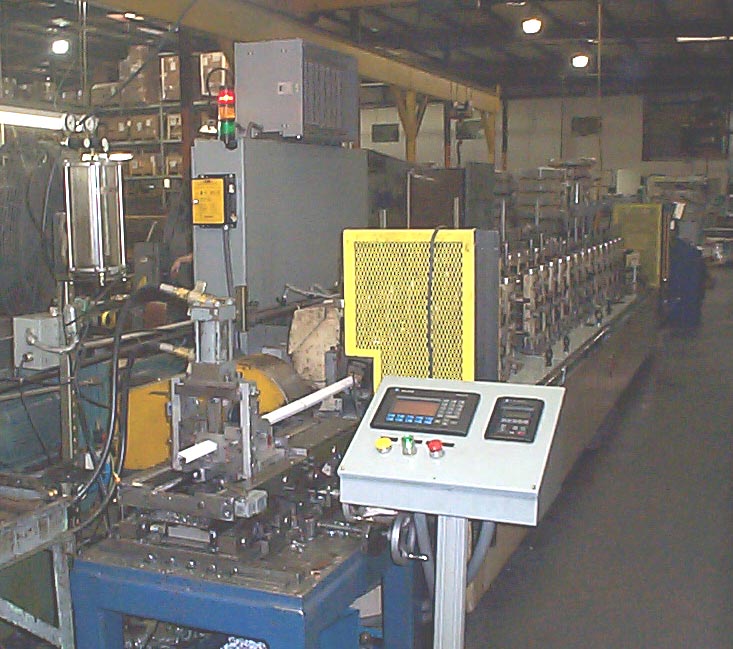A Metalforming Application

I decided to write a little about my first metal-forming job after receiving an e-mail from a gentleman in India who has been in the metalforming business for 43 years (hello Ananth!) It reminded me of some of the good folks I know at Mills Products who helped me get started back when I started my integration business in 1996.
This job as with many others involved a customer who was very experienced in the area of their expertise but wanted an upgrade in the controls of the line. Prior to this application most of the lines in their metalforming plant were controlled with a combination of PLC and mechanical interlocks making it difficult to change the line over with different products. A combination of an AC drive to push product through the rollformer and a high speed counter with an encoder was used to set the length of the product. This could cause difficulty because the logic in the old SLC 5/01 processor had been band-aided many times and was not well documented.
We started with the assumption that we would use a servo for precise measurement and control. The front end started with an unwind system with a loop and ultrasonic sensor and two whisker switches for overtravel. The next station was a servo with a set of rollers to drive the sheet metal to the rollformer. A hydraulic punch punched a rectangular hole in the sheet steel at precisely controlled intervals, followed by another loop and level control. The unwind then ran at a fairly continuous slow rate, the servo indexed and punched, while the rollformer would again run continuously.
A rollformer is a series of die cylinders which forms the sheet metal in stages as it moves through the machine. Metal enters the rollformer in a flat position and then is formed into a cylindrical profile as it moves through the die rolls. There is a real art to setting the dies up and it takes years of experience to be able to do this quickly and efficiently.
The picture above shows the product exiting from the hydraulic cutoff. A spring loaded finger falls into the notch punched at the incoming side of the rollformer, as the punch mechanism is pushed forward another limit switch activates the hydraulic solenoid driving the cutoff, the finger pulls up and out of the notch, and the punch mechanism is pulled pack to the start point ready for the finger to engage the next part. Because the rollformer drives the speed of the line fairly slowly, mechanical fail-safe means such as this can be used reducing the number of driven actuators.
The small interface to the right of the pedestal is used to control the servo while the Panelview 550 on the left is used to display faults, place the machine in manual and auto modes and allow the operator to move any actuator on the line. The rollformer itself is driven with a 50hp AC variable frequency drive allowing the metal to be jogged into the line, backed up and precisely controlled.
At the time of this job I had more experience in packaging and automotive assembly equipment than anything else, so this was a great learning experience. I still remember the smell of the coolant that was pumped over the steel as it made its way through the former rolls. Over the years I did several more jobs with Mills Products including three more rollformers, several press integrations and a large hydroforming project. Most of my experience with hydraulics came from this field. There is something very satisfying about working with large machines and steel that I still have fond memories of. These jobs didn’t always use the highest level of technology but were always good exercises in power distribution and integration of customer supplied equipment.
